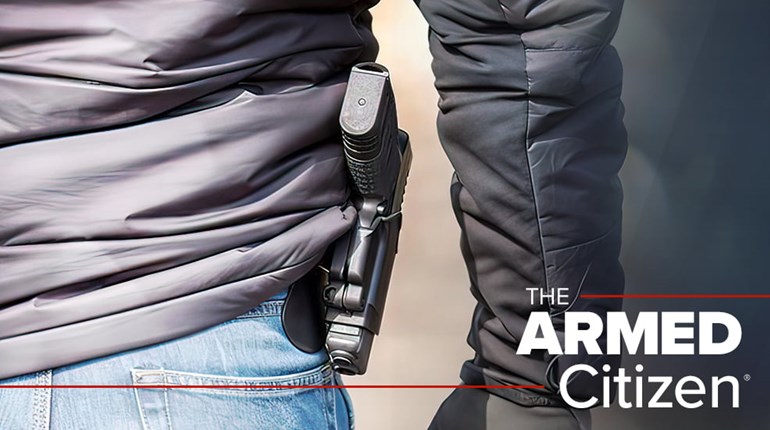
Freshly returned from Atlanta—actually, exhaustedly returned—we’re as anxious as our depleted state allows to get back to our “Open” division Glock build. If our break for NRA Annual Meetings coverage has caused you to drop the thread, take a look here and here.
But speaking of Annual Meetings, we should probably close the loop there on what we were expecting vs. what we saw.
Our predictions? Well, not so much: We’d have to call ourselves 0-2. We were hoping to see some better solutions for red dots on small pistols (like the Glock 42/43, S&W Shield, or even the new Springfield XD-E), but these weren’t much in evidence. We already noted this dandy from Suarez International, and the excellent Shield red dots from across the pond, but widespread, they aren’t.
This whole business, however, we’d call tricky. Much as we like these smaller guns, they need to be chosen and carried with some caution, no matter what sighting technology is aboard. No rocket science is needed to understand why. The bulk of training and practice gets done with “service”-sized firearms for many interrelated reasons, and folks often assume these skills will transfer in presto fashion to what’s actually a considerably smaller carry gun. Rarely do their expectations prove true—under time restraints, it isn’t uncommon for 2.5-3x multipliers to (revoltingly) appear. In other words, something you can do in 3 seconds with your full-sized Whizbang XYZ 2 takes 7.5 seconds with your TinyWonderGun Mk3.
We’re not trying to depress you, mind, but rather to encourage you to be realistic about both your skills and gear. Trigger press and shortened sight radius are the big factors, but magazine swaps and malfunction clearing are just some of the other manipulations that will slow down on smaller firearms. Merely adding the speed and precision of a red-dot via a slick new/small size or a superior mount does not moot these barriers to rapid defensive employment. We—and many others—have said it often: Train a lot with precisely what you carry, not just with what is the most fun.
In terms of suppressors, vendors were certainly there in force, but this whole segment is holding its collective breath. We saw “new,” but not much “NEW!!” Such is going to wait, it seems likely, for some resolution on the Hearing Protection Act. Sigh.

Open Glock Build—Back To It!
We’ve settled a couple of crucial parameters in our Open project, namely the base pistol (a Glock 17 MOS) and the barrel/comp system (Jager Products). It’s tempting to look at a photo of a complete Open rig and think “get the sight on, and go to work!” Right?
You certainly could. But we’ll suggest there’s more to it than that if you want to get closer to a full-up Open experience. You may recall that’s what we’re after: a close approximation at comparatively modest cost that will help you decide on a next step, if any.
Our comp/barrel system is certainly a huge contributor to overall speed, but depending on the task, other factors will come in to play as well. Straightforward examples pop up all the time if you’re considering competition. USPSA, for instance, has those pesky classifiers that mandate reloads while you’re on the timer.
Here’s an area where even standard “staggered” stack pistols have a relatively major, intrinsic speed advantage over, say, a stock 1911. When the two columns of the staggered “double-stack” reach the top of the magazine, they’re merged into one. This in turn feeds cartridges along the centerline of the barrel and action as the slide reciprocates. We know: Duh.
Often overlooked, however, is the speed of magazine changes this makes possible. Think about the geometry, and it becomes obvious: The top of the magazines for these types of pistols (not just Glocks any more) is about half the size of the opening and tapered, so no great precision is required to successfully insert that magazine into the pistol. Compared to a single stack, this advantageous slop can easily cut reload time by essentially “funneling” the magazine into the pistol. Just don’t think this means you can stop looking at your reload.
Part of our Open build will expand on this advantage. Thanks again to the experience of the Jager folks, a Carver Custom magwell is the next add. We won’t waste your time with explanations—just take a look at our photos. While precise measurement is intricate, our math yields a three-fold increase in stuff-it-in-there real estate. The rumor that the U.S. Postal Service assigns a separate zip code is false, but it’s comprehensible how such a story got started.

Carver cleverly builds in another small advantage with the mount for the magwell—a brass plug for the hollow at the back of the Glock magazine compartment. If a G17 is a duty gun of some sort, it’s desirable not to pack this with any material to keep belt weight down, but just the reverse is true in an Open pistol—adding mass helps the shooter resist the rearward movement of the pistol in recoil by simple inertia.
If you’re new to the whole magazine-well business, a little incredulity is natural. We may have proof of a sort, however, and we go back to those USPSA Classifiers for some actual numbers. Recoil comparisons are apple-to-oranges between comp’d and uncomp’d guns, and red dots simply are faster, but if you spec “Open” division times against “Single Stack” times on El Presidente (99-11), it’s obvious in a hurry—pun intended—that Open is plenty faster. Even at lightning Grand Master levels, the difference is more than 9 percent.
Hard to believe at least some of that isn’t the mag change, so Carver magwell, here we come.
Frank Winn has been studying arms and their relationship to tyranny, meaningful liberty and personal security all his adult life. He has been a firearms safety/shooting instructor for more than 20 years, and earned state, regional and national titles in several competitive disciplines.


































